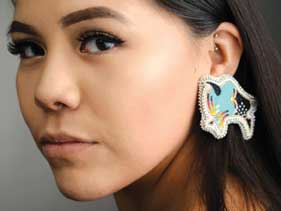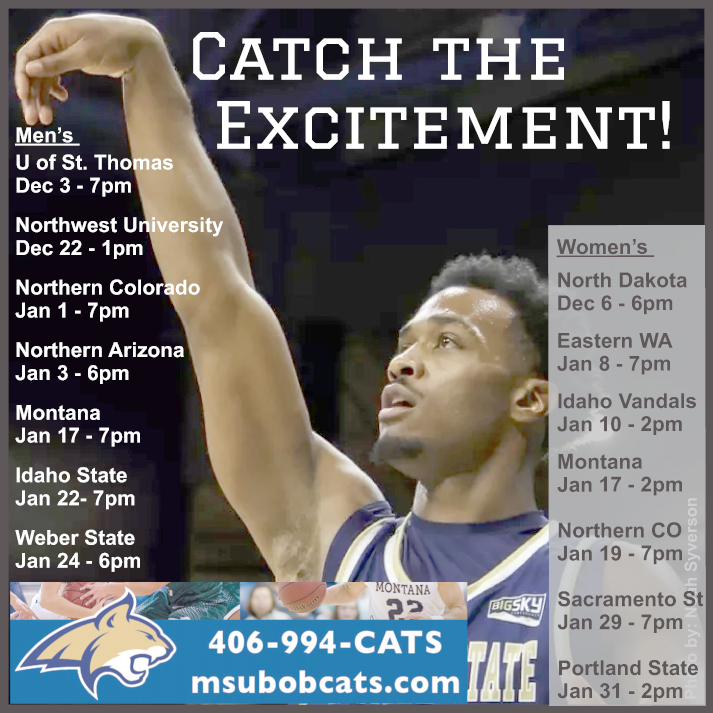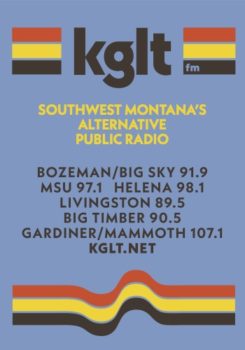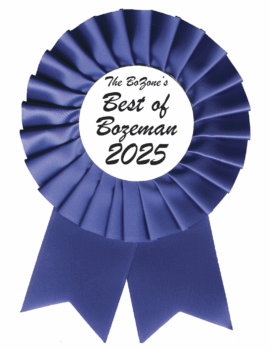 Stepping up with Connie Brownotter of the Standing Rock Sioux Nation
Stepping up with Connie Brownotter of the Standing Rock Sioux Nation
from MSU News Service
Part honor student, part ranch kid, equal parts indigenous activist and powwow and homecoming royalty, Connie Brownotter of the Standing Rock Sioux Nation is a campus leader who is changing the narrative about American Indian students at MSU.
What is your hometown, tribal affiliation and major?
I grew up on my family’s buffalo ranch in Bullhead, South Dakota, on the Standing Rock Sioux Reservation. I’m Hunkpapa Lakota and Diné (Navajo). I’m a junior majoring in Human Development and Family Science and minoring in Native American Studies.
You have a lot of activities, but what is your No. 1 priority?
Academics. I put so much work and passion into what I do. I’m a Gates Millennium Scholar, an MSU Presidential Emerging Scholar, an executive member of the American Indian Council, an Honors College student and I was a member of Phi Upsilon Omicron honors society. Academic success makes me happy and is one of my top priorities.
Most important goal?
I want to be a role model. I want to reflect the success of the indigenous community at MSU and show that a Native woman can succeed. I want to bring awareness to the MSU campus community that indigenous people are still here, we’re proud of our cultural identities and we’re doing amazing things.
How do you model that to other students?
A lot of Native American students struggle when they come to campus because they feel like they don’t fit in. I believe that you can change and grow when you step out of your comfort zone. However, many Native students step out of their comfort zones just by coming to school at MSU. In order to help them succeed here, I like to bring them (younger Native students) into the circle and invite them to join our community. We have to create an environment where they will feel supported. I want other Native students to think, “If she can succeed, I can, too.”
I am proud of the Native presence here (at MSU). I want to put that out there. There are strong Native students on MSU’s campus. We are a beautiful people doing big things.
Where did you gain your confidence?
I am, at heart, a shy person. It took years and years for me to learn how to be confident and reach out to others. Adversity, for me, helps me improve. Usually, I’m the only brown student in my classes, but I try not to let that affect me in a negative way. I take challenging moments like that and try to look at them in a way that will allow me to use my unique perspective to my advantage. In short, I gain my confidence from my Native identity.
Who motivates you?
My family. My whole, entire family is high-achieving, successful and hardworking, yet so humble, kind and supportive. They constantly motivate and support me. And I have had help. So much help. When I was a junior in high school my science teacher encouraged me to apply to a preparatory school called Phillips Academy Andover near Boston. I don’t know if I would have gone without her support. She encouraged me and believed that I could do it, so I did.
Why education?
Because the possibilities with that degree are endless. Higher education, to me, is what will help future indigenous leaders make a lasting difference in their communities. Education will help us gain the knowledge and the tools to make a positive impact in our tribes. The combination of culture and higher education is powerful.
As for myself, I have changed my major seven times to find out what really interests me. I love education and I plan to get my master’s degree and doctoral degree. I could see myself as a professor at a tribal college or working on my family’s ranch or being involved in tribal politics. I’m not sure yet. I can see myself in a lot of areas. One thing is for sure, I’ll be working with my people on Standing Rock.
What is the most surprising thing that has happened to you at MSU?
I was selected to be a finalist for homecoming ambassador this year. At the interview, I had to sing the MSU fight song in front of a large panel of judges. That sort of thing really pushes me out of my comfort zone, but I did it. I am going to be out there on the football field in my Native regalia. It is time for indigenous people to reclaim their pride in their identities and their culture. I hope to embody that.
And you are also Miss Indian MSU.
Yes, which is another form of leadership. With this title, I travel and represent MSU and the American Indian Council at powwows and events throughout the nation. This title gives me the opportunity to serve as a goodwill ambassador for indigenous people as well as to be a positive role model for indigenous women everywhere.
I danced since I was a little girl, but I stopped dancing at powwows when I literally outgrew my moccasins and didn’t get a new pair. I love powwows, and when I came to college, I decided I would make my own regalia. Some people don’t realize how much time and money goes into making regalia. I ended up teaching myself how to make my own jingle dresses. I hope that by doing this, I can encourage Native people everywhere to learn traditional art forms in order to keep our traditions and culture going.
What do you see yourself doing in 10 years?
Continuing to be a leader. I see myself going home to do work with my tribe and community, to make a difference. I don’t know if it will be in politics, maybe, or education. But it will be about leadership for me and my people. And, I know I will succeed through hard work, courage, ambition, and culture.
This article was originally published in MSU’s Mountains & Minds Magazine, Fall 2018. •






